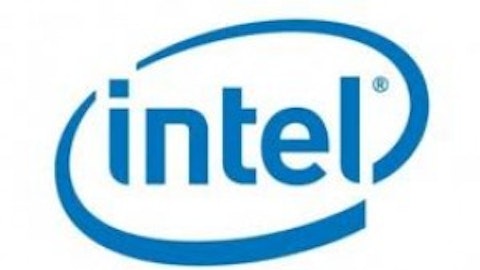With smartphone and tablet sales through the roof, and lagging laptop sales that don’t show signs of resurgence any time soon, some companies are taking the hit—namely, PC-chip companies. Advanced Micro Devices, Inc. (NYSE:AMD), Texas Instruments Incorporated (NASDAQ:TXN), and Intel Corporation (NASDAQ:INTC) all have bad news for investors: the fourth quarter numbers weren’t great. For many, this shouldn’t be a surprise. However, what does the future hold for these companies, and can they earn their way into your portfolio? Let’s take a look.
Let’s start with AMD. Wider fourth quarter losses as a result of weak demand for PCs (and their chips) have prompted long-need moves at the chip giant, including major cost cuts and modified manufacturing partnerships. Even worse, the company predicts an even further 9% sink in first quarter revenue. AMD Chief Executive Rory Read admitted that “[AMD] expects continued choppiness in the PC market in the first half of 2013.”

Either way, such a small glimpse of hope shouldn’t be counted on to bring a down-in-the-dumps company struggling for new revenue streams in smartphone in tablet markets. AMD finished the fourth quarter with net losses amounting $473 million, or 63 cents per share, nearly three times the losses of the same quarter last year. Revenue fell 32% to $1.16 billion. Don’t bet on AMD for now.
Now, let’s shift our focuses to Texas Instruments. Probably most known for their famous line of calculators, TI sells several types of computer chips, including those which manage parts of PCs, including power and battery life, screen display and lighting, and disk drives. However, like many of their competitors (and the rest of the world,) they have been slowly shifting their focus from those chips to ones specialized for smartphones and tablets.
Their fourth quarter profit sagged 11% while revenue fell 13%, blaming the unstable European economic situation as well as unstable growth in China as reasons for lower consumer confidence. TI’s fourth quarter profit of $264 million, of 23 cents per share, is down 13% from last year’s mark of $298 million, or 25 cents per share.
For the opening quarter of 2013, TI predicts earnings for share numbers in the range of 24 to 32 cents, as well as revenue between $2.69 and $2.91 billion. Analysts have higher hopes, estimating per-share earnings of about 24 cents based on revenue of $2.89 billion.
TI does have lots more in their arsenal than chips, and is looking to seriously shift away from PC chips into the emerging revenue stream markets. While saying and doing are two different things, hopes seem higher for TI than AMD.
Now, let’s look at Intel. Fourth quarter profit numbers revealed a 27% slide, another sign of lagging PC demands. Formerly so successful due to their market dominance in the PC chip field, Intel is now in a bind and facing the question about what to do to adapt to the way of the world. A shift in consumer interest towards tablets and smartphones has sent Intel spiraling downwards.
Hopes that Microsoft’s new Windows 8 devices would spur sales haven’t exactly followed through. Sales numbers for the new devices haven’t shown enough to revive the PC market for Intel. So, what now?
Intel revealed that revenue from its PC chip division sank 6% from a year earlier, pulling down total revenue 3% at a time when the company usually releases its best results. Intel predicts a further 6% slide in the current quarter.
However, like AMD and TI, the news isn’t all bad. Intel’s net income and gross profit margin beat market analysts’ expectations, finishing higher than expected due to higher chip prices.
While companies like Texas Instruments are adapting by shifting to tablet and smartphones, Intel is banking on something entirely different: the Ultrabook, or a laptop and tablet in one. These are laptops that convert from the standard mode into a tablet-style mode. Intel’s CEO Paul Otellini has placed his confidence in making chips for these Ultrabooks, noting that the number of models of the hybrid computer-tablets has grown from 20 to 140 models. He commented that “it’s no longer necessary to choose between a PC and a tablet.
In addition to the Ultrabook investment, Intel has their chips in a few new models of smartphones and tablets, but nothing to write home about.
The other main issue with Intel is their immense spending habits. After spending $11 billion on just capital equipment and facilities in 2012, Intel pledges another $13 billion this year. Such numbers show that the company has big bets for huge revenue sums in the coming years, something that they may not be able to follow through on without success in the tablet and smartphone market.
Intel predicts revenue of $12.2 to $13.2 billion for the quarter, on track with analyst estimates of $12.9 billion.
Such high spending habits without incredible promise for revenue doesn’t seem like a formula that earns its way into my portfolio. Well, for now, at least.
In summary, the PC chip market is in a bind, and companies are struggling to find new ways to adapt. Until they each discover ways to do so, I would stay away for now.
The article Changes in the Chip Market: How Will Chipmakers Adapt? originally appeared on Fool.com and is written by Michael Nolan.
Copyright © 1995 – 2013 The Motley Fool, LLC. All rights reserved. The Motley Fool has a disclosure policy.





